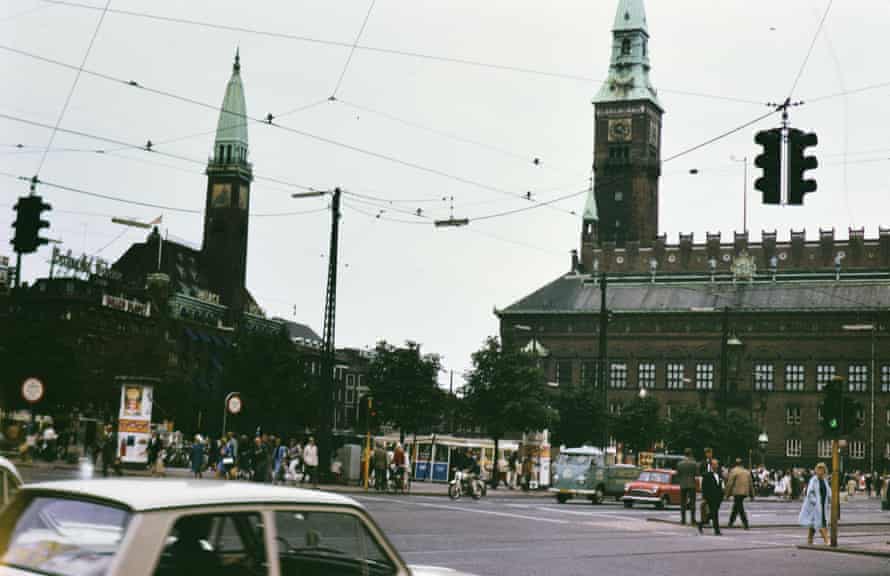Childhood/Youth/Dependency review – memoirs of art and addiction
Danish poet Tove Ditlevsen’s trilogy about her drug-ravaged life, published in English for the first time, is astonishing
Alex Preston
Sunday 24 November 2019
“A
Ditlevsen was born in Vesterbro, Copenhagen, in 1917, the daughter of a fretful, socially ambitious mother and a socialist father who was fired from one job after another for his politics. Their down-at-heel neighbourhood is full of drunks, and the future for Ditlevsen is – at best – one of marriage to a “stable skilled worker”. Already, though, there were traces of the mental illness that will shipwreck her adult life, with a suffocating sense of melancholy settling over her childhood.
Ditlevsen is an unusually solemn young woman – she has few friends, and those she does have appear unknowably foreign, uncomfortably interchangeable. “Childhood,” she writes, “is long and narrow like a coffin, and you can’t get out of it on your own.” Rather than play in the courtyard of her tenement block, Ditlevsen prefers to read and write poems. This is, in part, a Künstelerroman, seeking traces of future literary stardom in the early life. Childhood ends, beautifully, thus: “My childhood falls silently to the bottom of my memory, that library of the soul from which I will draw knowledge and experience for the rest of my life.”

One of the many semi-miraculous elements of Ditlevsen’s prose, which appears at first glance breezily artless, is the way she’ll settle on an object and rub her characters up against it, grounding them in the physicality of her world. So she writes that “my mother’s dark anger always ended in her slapping my face or pushing me against the stove”. But then her father is “big and black and old like the stove, but there is nothing about him that I’m afraid of”. And, finally, a page later, the stove becomes a point of solidity as her childhood rushes by: “The living room sails through time and space, and the fire roars in the stove.”
The affectless prose is interrupted by glorious poetical flourishes, and these bursts of lyricism are more than merely ornamental. The books handle time by stepping between the present tense and the past so that, as in the work of Knausgaard, we move kaleidoscopically from minutely observed particularities to the broad sweep of a life. “Time passed and my childhood grew thin and flat, paperlike,” she writes at one point.
The rise of Nazism makes her feel “as if the swells from the great ocean of the world could capsize my fragile little ship at any moment”. She aborts a child because it will get in the way of her writing, and says: “I don’t regret what I did, but in the dark, tarnished corridors of my mind there is a faint impression, like a child’s footprints in damp sand.”
It’s the final book in the trilogy, Dependency, that is the most memorable. After taking on and discarding two husbands, Ditlevsen meets Carl, a doctor, at a party to celebrate the end of the war. The next day, even though he has “an underbite and 64 teeth in his mouth instead of 32”, she goes to see Carl again and he injects her with Demerol. “The room expands to a radiant hall,” she writes, although when it wears off “it feels as if a grey, slimy veil covers whatever my eyes see”. Carl is a monster and becomes the last and worst of a long line of men to abuse the fragile Ditlevsen.
He controls her first with Demerol, then with methadone, and the writing career she dreamed of so fiercely as a child begins to wither. In a jealous rage, Carl silently extracts Ditlevsen from a dinner with Evelyn Waugh, then placates her with a shot of Demerol. Even the book’s half-hopeful conclusion is coloured by the reader’s knowledge of what is to come.
Writing about drug addiction and mental illness are difficult, because both offer a direct challenge to our ability to shape experience into language. Ditlevsen’s trilogy is remarkable not only for its honesty and lyricism; these are books that journey deep into the darkest reaches of human experience and return, fatally wounded, but still eloquent. The Copenhagen trilogy is as raw and poignant as Janet Frame’s An Angel at My Table. Like that book, it radiates the clear light of truth and stands as the ultimate victory of a life that must have felt, in the living of it, like a defeat.




No comments:
Post a Comment